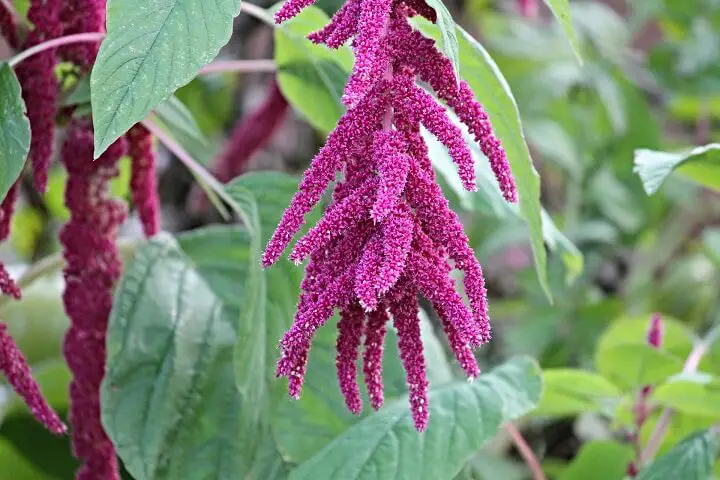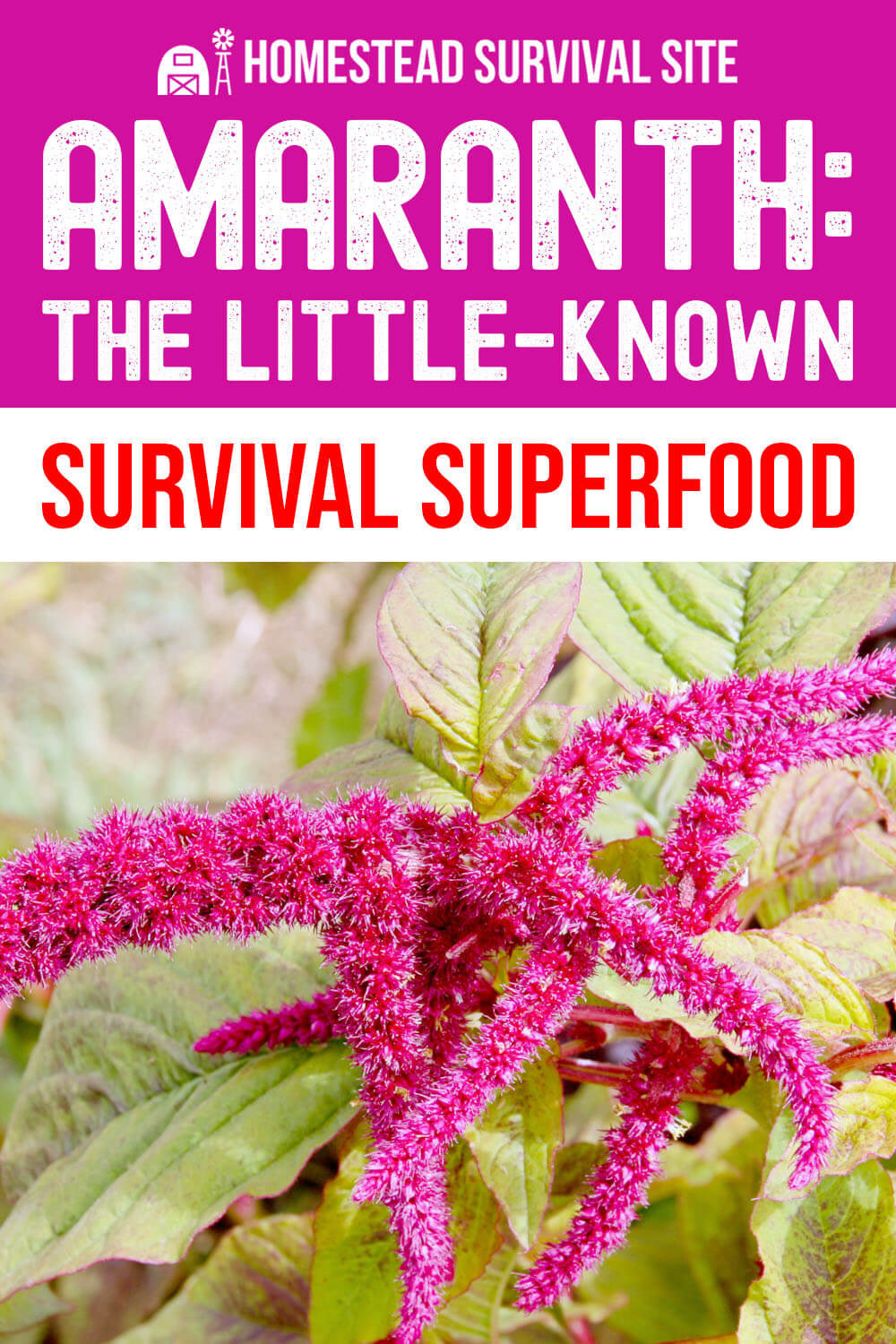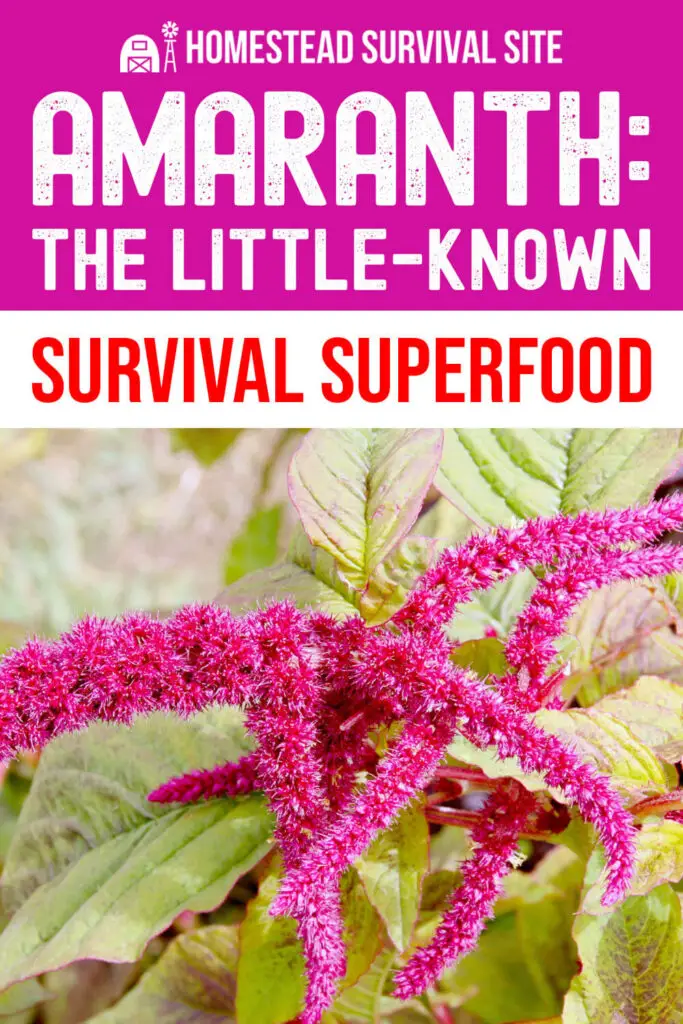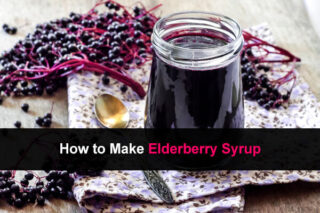Estimated reading time: 7 minutes
The world of grains is ever-expanding. The grains that we think are new to the market, like couscous and quinoa, have been around for centuries. But consumers have demanded access to different sources of protein, vitamins, and unprocessed food a lot more in recent years.
Amaranth is now one of those foods that have found their way onto supermarket shelves. While you may think this is a new product, amaranth has actually been around for thousands of years. Ancient civilizations, like the Mayans and Aztecs, grew this grain as a source for many needed nutrients in Central America.
Read on to learn more about amaranth, the little-known survival superfood.
Want to save this post for later? Click Here to Pin It On Pinterest!
Powerhouse of Nutrition
As many consumers have developed gluten intolerance, amaranth is naturally gluten-free, making it a great option as a carbohydrate. It is high in fiber and protein, which can be critical when using it in a survival situation.
Micronutrients and antioxidants are also abundant in this superfood, making it a natural choice for anyone wanting a different source of nutrients as well.

Taste & Classification
Amaranth is a small poppyseed-sized seed that has a nutty flavor. It looks a lot like quinoa but is classified as a pseudocereal. This means that amaranth isn’t precisely a cereal grain, but can resemble oats or wheat.
Unlike quinoa, amaranth is not fluffy but instead has a porridge-like consistency.
Nutrient Breakdown
Just one cup of cooked amaranth contains 251 calories and a whopping 9.3 grams of protein. As a grain, the carb intake is higher at 46 grams and 5.2 grams of fat.
However, there is an astounding amount of manganese at 105% of the recommended dietary intake. This nutrient is vital to brain function, which makes it crucial in a survival situation.
Other nutrients for a cup of amaranth include magnesium, phosphorus, iron, selenium, and copper.
Antioxidants in Abundance
Amaranth also includes plenty of antioxidants that help fight free radicals within the body. Some of the plant acids within the grain even act as antioxidants.
While raw amaranth is best for antioxidant ingestion, soaking and cooking the grain will likely diminish the overall antioxidant depth.
Growing Amaranth
Make room on the homestead to grow amaranth and try producing your own amaranth next year.

How to Grow
You’ll need a few varieties of amaranth if you want to add it to the homestead for both seeds and leaf consumption. Much like other greens varieties, leaves can be harvested when the plant is young for best flavor.
This means that the plant will never mature to also produce seed. It is best to choose a few of the healthiest plants to become seed plants and use the rest for fresh salads.
The seed is quite small and easily sprinkled and raked into the soil. The plant itself is self-seeding and will produce more plants next year when allowed to go to seed. Grow amaranth year-round in tropical locations as the plant loves warm climates with plenty of sunshine.
It takes about 110-150 days for the grain varieties to produce grain, so plant in the spring if living in a colder climate.
Harvesting the Seeds
Just one Amaranth plant can produce hundreds of thousands of seeds. That means you can produce and harvest enough amaranth to store for months or even years at a time.
This grain, which is technically considered a seed, grows on large plants that belong to the Pigweed family. There are multiple types of amaranth that you can plant on the homestead with plenty of sizes, shapes, and colors to choose from.
Once the plant goes to seed, you can harvest the seed heads by cutting them off the stem. Allow them to dry for a few days in the sun, avoiding any dampness or excess moisture. Place the seed heads in a paper bag and shake vigorously until the individual seeds fall off. Strain the seeds through a sieve to free them from their outer shell.
Long Shelf Life
Amaranth seeds are best stored in airtight containers, such as a glass jar. Place them in a cool, dry spot in the home without any sunlight. Amaranth that is stored correctly can last a few years.
Amaranth flour needs to be stored in airtight containers in the fridge or freezer due to their its fat content. This flour can easily last up to 3 months in the refrigerator and 6 months in the freezer.
The longevity of amaranth seeds can add an element of natural protein and vitamins to your stockpile without a lot of work.
Other Ways To Enjoy Amaranth
While many do love the taste of Amaranth cereal or porridge, you can use other parts of the plant to create other needed items on the homestead.
Fresh Salads
Amaranth leaves are well known for their taste and texture, making them perfect for salads. Like the seeds, the leaves of the plant pack a punch compared to other salad greens. You’ll get three times the amount of niacin and calcium when eating an amaranth salad instead of a spinach salad.
Growing your own amaranth leaves is best as cut leaves don’t last long and should be eaten the same day for best flavor and texture.
Gluten-Free Flour
Grinding harvested Amaranth seeds into flour is one of the easiest ways to make flour on the homestead. The seeds create a lovely gluten-free flour that is perfect to use in dishes and baking. The flour mixed with water will make great flatbread consistency that is perfect for wraps or to sop up soups.
Added As A Protein Booster
You can add small quantities of amaranth to other grains, such as rice, to help boost the nutrients of the meal. This is a great tip for those homesteaders with kids who don’t like to try new things.
You won’t be able to tell the difference in taste, but the meal will have an added boost of protein and other nutrients.
Popped As A Topping
You can also pop amaranth much like you would a corn kernel. Simply add a tablespoon of amaranth to a hot pot. Stir the seeds around as they pop to keep them from burning. You’ll end up with a tiny fluffy kernel that you can then eat as a snack or add as a topping to salads or soups.
Add As A Thickener
Amaranth is naturally gelatinous when mixed with water. This means that you can add it as a thickener for soups and stews instead of using flour or cornstarch. Doing so allows you to create a hearty meal in both consistency and nutrients.
There are so many ways you can use amaranth in your daily life. Not only is it a great gluten-free option for those with celiac disease, it also provides a punch of protein and nutrition in a tiny grain.
Amaranth is easy to grow, but it also is an excellent choice to purchase from a local supplier to add to your stockpile. Plenty of health benefits and meal options surround this superfood, and most people have never even heard of it, but now you have.
Like this post? Don't Forget to Pin It On Pinterest!













Why no resource on seed?
Ebay sells amaranth seex for food. Baker seeds sells amaranth of several different varieties for your garden.